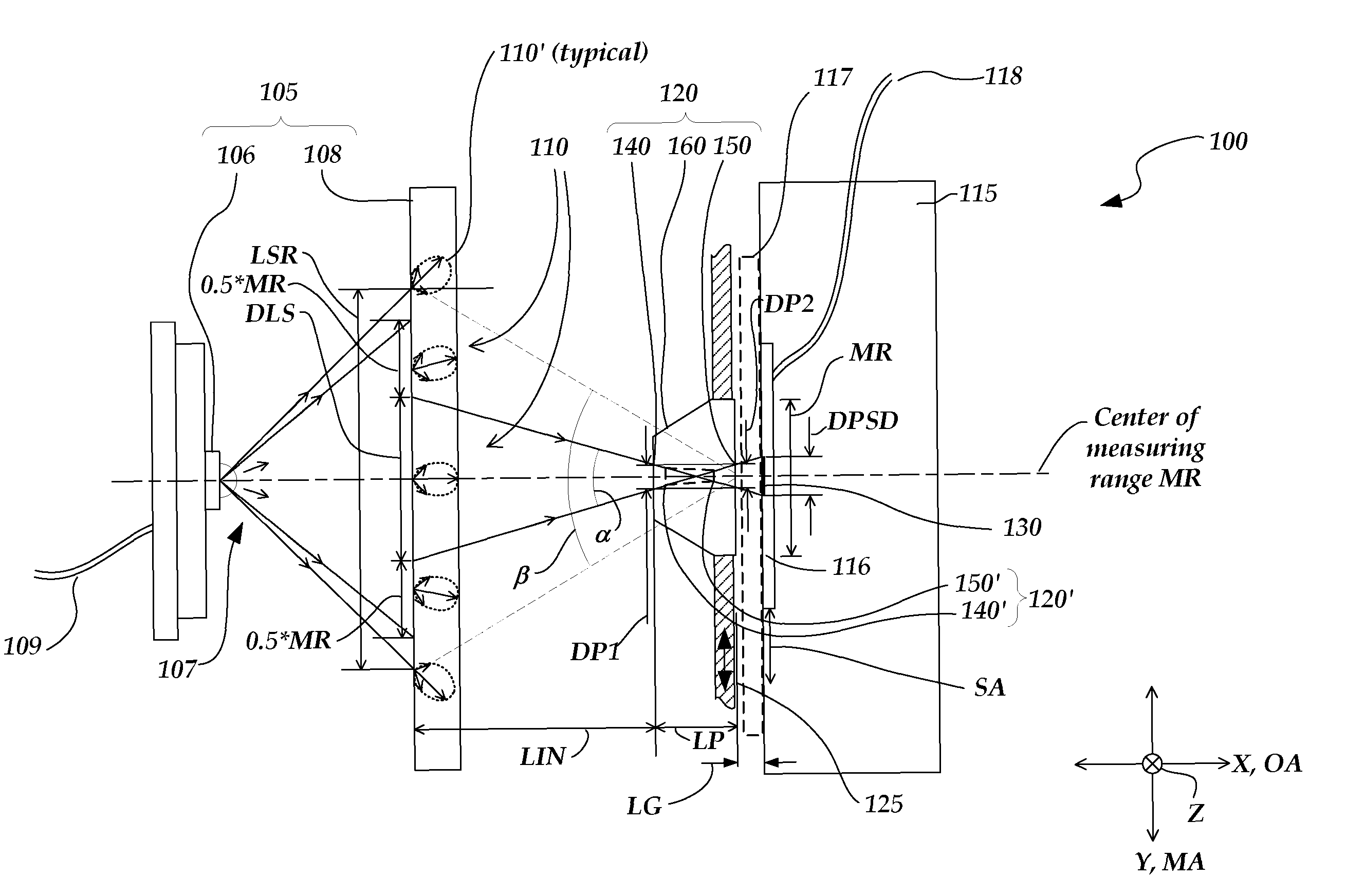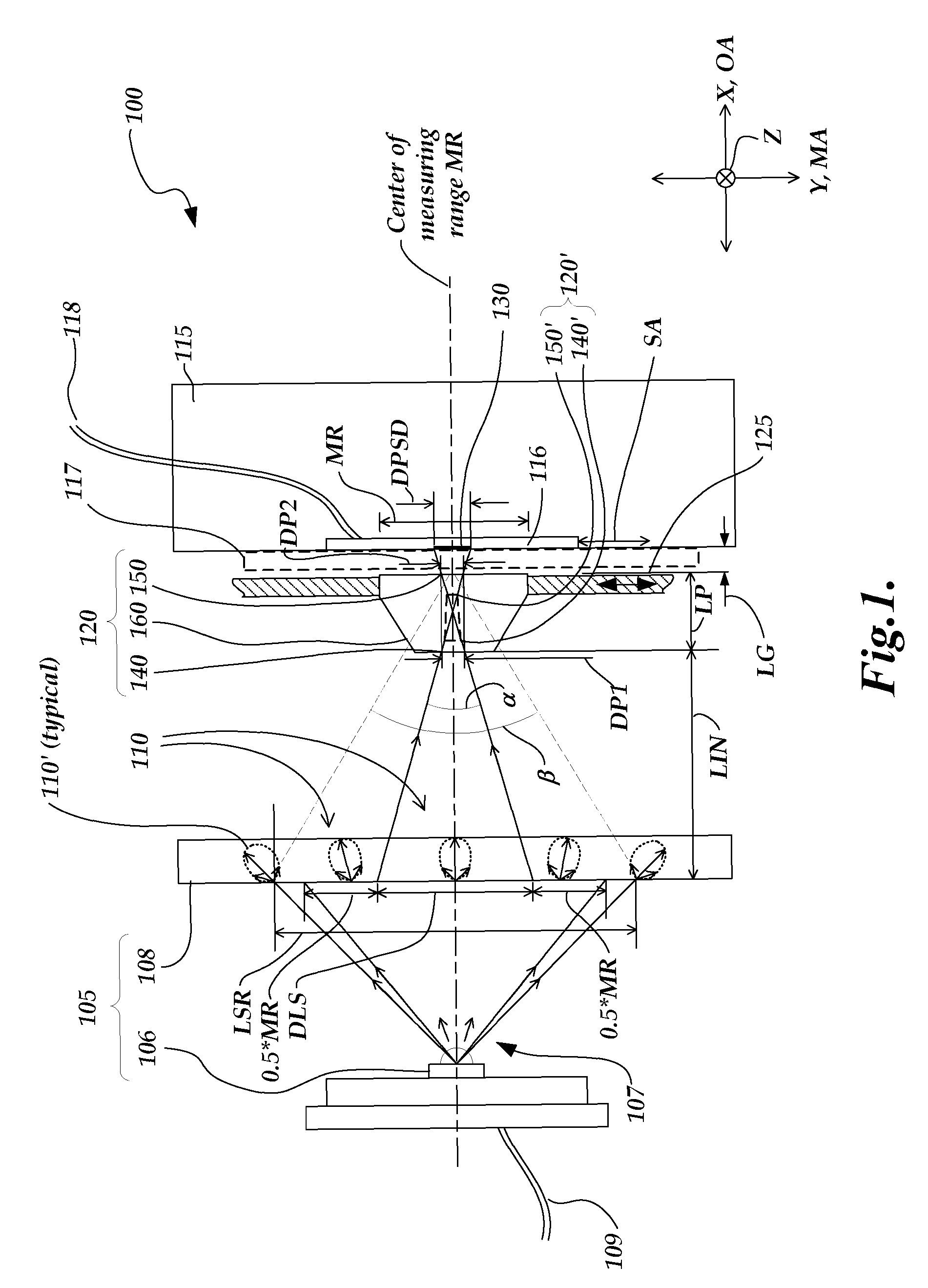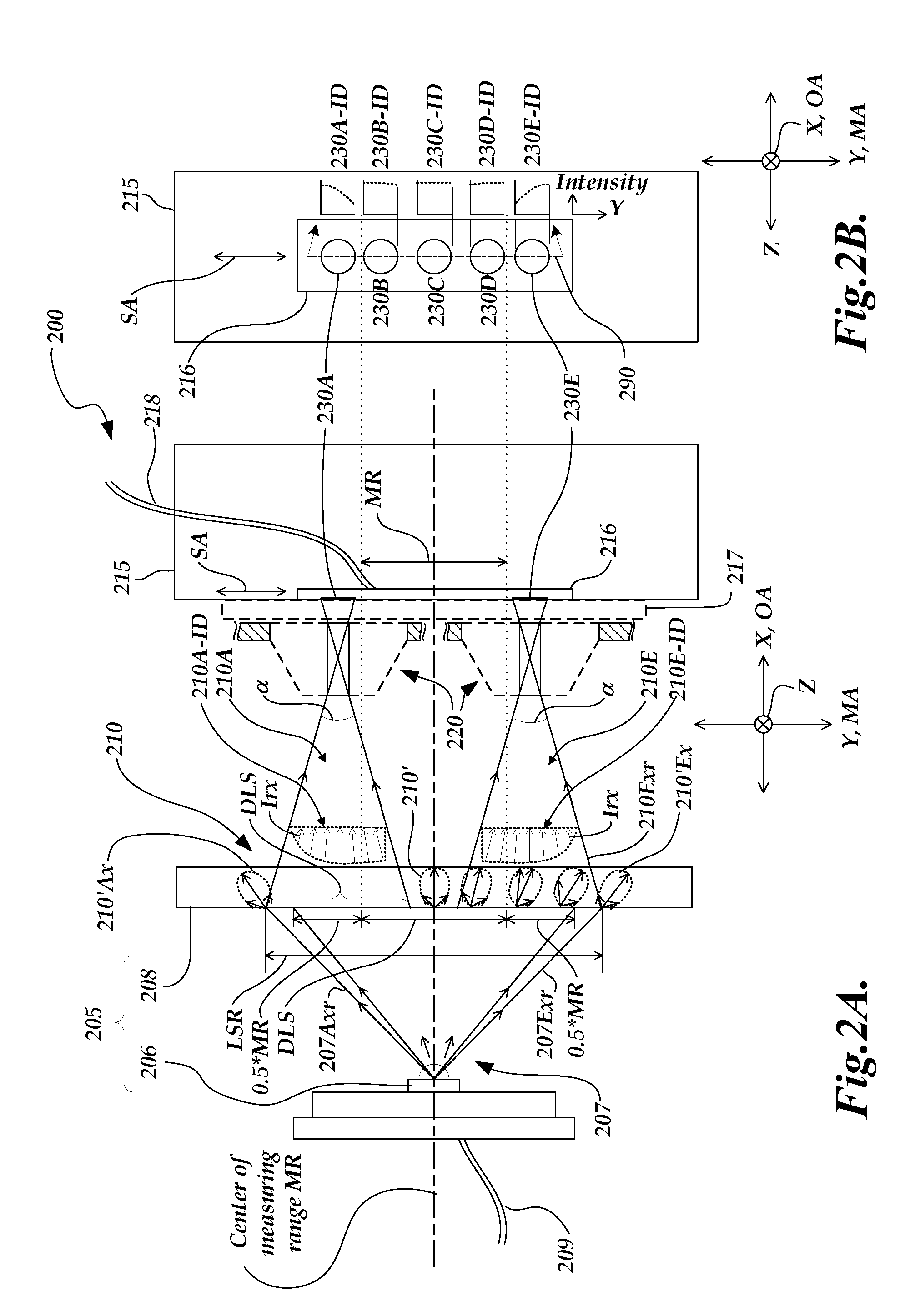Linear displacement sensor using a position sensitive photodetector
a position sensitive, sensor technology, applied in the direction of converting sensor output, measurement devices, instruments, etc., can solve the problems of limiting the linearity and accuracy of the signal of the optical position sensing device such as those outlined above, and the distribution of light within the detected light spot will have a corresponding non-uniformity, so as to minimize the intensity variation and maximize the signal
- Summary
- Abstract
- Description
- Claims
- Application Information
AI Technical Summary
Benefits of technology
Problems solved by technology
Method used
Image
Examples
first embodiment
[0025]FIG. 1 is a diagram of a schematic cross-sectional view perpendicular to the measuring axis direction MA of a position sensing device 100 according to the present invention. FIG. 1 shows a measuring axis direction MA indicated as a Y axis direction, and an optical axis direction OA indicated as an X axis direction defined to be perpendicular to the Y-Z plane, which is defined to be parallel to the plane of the sensing surface 116. The position sensing device 100 comprises a diffuse light source 105, light source power line or lines 109, a position sensitive photodetector 115 comprising the sensing surface 116, signal line or lines 118, a protective window 117 (optional), and a moving aperture arrangement 120 located between the diffuse light source 105 and the position sensitive photodetector 115.
[0026]The position sensitive photodetector (or detector) 115 is fixed relative to the diffuse light source 105 and aligned with its sensing surface 116 opposing the diffuse light sour...
fourth embodiment
[0048]FIG. 6 is a diagram of a schematic cross-sectional view perpendicular to the measuring axis direction for a position sensing device 600 according to the invention. The 6XX series numbers in FIG. 6 that have the same “XX” suffix as 1XX and 2XX series numbers in FIGS. 1 and 2 may designate functionally similar or identical elements unless otherwise indicated. Thus, the operation of the position sensing device 600 may generally be understood by analogy with previous descriptions, and only certain aspects of its operation will be described here.
[0049]Regarding FIG. 6, the primary difference between the position sensing device 600 and the position sensing devices 100 and 200 of FIGS. 1 and 2 is that the diffuse light source 605 comprises a moving diffuser 608, attached to the moving aperture arrangement 620 by a diffuser holder 627. A fixed light generating portion (e.g., the LED 606) may generate light 607 that spans the dimension LSR along the measuring axis direction MA at a pla...
PUM
 Login to View More
Login to View More Abstract
Description
Claims
Application Information
 Login to View More
Login to View More - R&D
- Intellectual Property
- Life Sciences
- Materials
- Tech Scout
- Unparalleled Data Quality
- Higher Quality Content
- 60% Fewer Hallucinations
Browse by: Latest US Patents, China's latest patents, Technical Efficacy Thesaurus, Application Domain, Technology Topic, Popular Technical Reports.
© 2025 PatSnap. All rights reserved.Legal|Privacy policy|Modern Slavery Act Transparency Statement|Sitemap|About US| Contact US: help@patsnap.com



